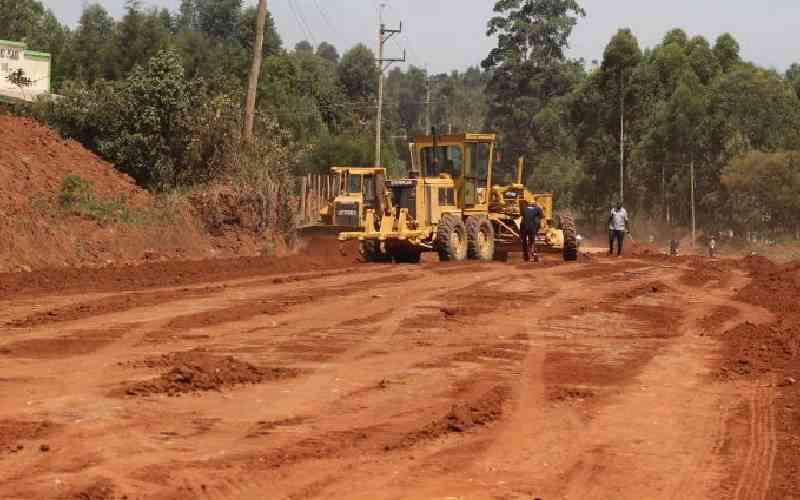There is a popular joke about two engineers who both studied in top European engineering schools; one was African and the other was from the Far East.
The African once visited his oriental pal and he was shown big expansive roads with traffic moving smoothly.
The Asian informed his pal that he had collected a 10 per cent motivation fee. The African engineer was sufficiently motivated.
A few years down the line, the Oriental engineer paid his African friend a visit.
“See that road? I too took a motivation fee.”
“But where is the road?” asked the fellow from the Far East.
“There is none. I took a 100 per cent motivation fee,” the African engineer gloated.
That there are many ills that need fixing on the African continent is an open secret. Road construction is one of them.
Mid last year, the Government launched an ambitious road construction financing mechanism.
Like many initiatives before this, it was regarded as another attempt by technocrats to look and remain busy. But it looks like the cogs of execution have begun to turn. In March, the Cabinet approved the initiative.
Dubbed the Road Annuity Programme, it was acclaimed as the solution to our poor showing on tarmac road expansion.
If you want to find an overnight multimillionaire, you need to look no further than road construction. Of course, the quality of the road is telling, with the depth of the tarmac laid no wider than a slice of bread!
In our villages, we all have many examples of good roads made bad. We have roads that start chipping away as soon as the contractor’s earth movers are gone.
So, how does the road annuity development scheme address these ills?
The scheme requires successful contractors to seek ways to finance the construction of roads once they win bids and most importantly maintain these roads once they have constructed them.
Stay informed. Subscribe to our newsletter
Under this mechanism, contractors are expected to complete works within the stipulated time.
They are also expected to guarantee construction quality and undertake post-commission maintenance of the road.
The model presents several advantages. For starters, it takes the funding pressure from the Government and puts it in the hands of the private sector. This also goes for money to be used in monitoring and supervision.
Secondly, the contractor is incentivised to do a good job and finish the project on schedule.
After construction is done, and government engineers have inspected the roads for compliance and issued certificates of completion, the contractors will be paid.
The contractors are further required to maintain the roads for a number of years before handing them over to the Government.
This way, Wanjiku is assured of a good road that will last beyond the teenage years of her daughter.
The scheme is novel as it can help reduce corruption, poor workmanship and delays, even as it helps to spur investment in infrastructure. We all have hallowing tales of roads that have taken nearly a decade to complete. Children are born and complete several years of school before a small portion of a road can be finished.
Those who witnessed the construction of Lang’ata Road in Nairobi County will attest that they were surprised to see the rigorous approach.
To make the road durable, blocks of rocks were laid after the initial layer of tarmac. This was unheard of in road construction in Kenya. It was even whispered that the construction was directly supervised by the World Bank.
Besides widening our road network, such is the malaise that the Road Annuity Programme seeks to put to rest. Now, we can have roads that can last longer, after construction, than one parliamentary term.
 The Standard Group Plc is a
multi-media organization with investments in media platforms spanning newspaper
print operations, television, radio broadcasting, digital and online services. The
Standard Group is recognized as a leading multi-media house in Kenya with a key
influence in matters of national and international interest.
The Standard Group Plc is a
multi-media organization with investments in media platforms spanning newspaper
print operations, television, radio broadcasting, digital and online services. The
Standard Group is recognized as a leading multi-media house in Kenya with a key
influence in matters of national and international interest.
 The Standard Group Plc is a
multi-media organization with investments in media platforms spanning newspaper
print operations, television, radio broadcasting, digital and online services. The
Standard Group is recognized as a leading multi-media house in Kenya with a key
influence in matters of national and international interest.
The Standard Group Plc is a
multi-media organization with investments in media platforms spanning newspaper
print operations, television, radio broadcasting, digital and online services. The
Standard Group is recognized as a leading multi-media house in Kenya with a key
influence in matters of national and international interest.









